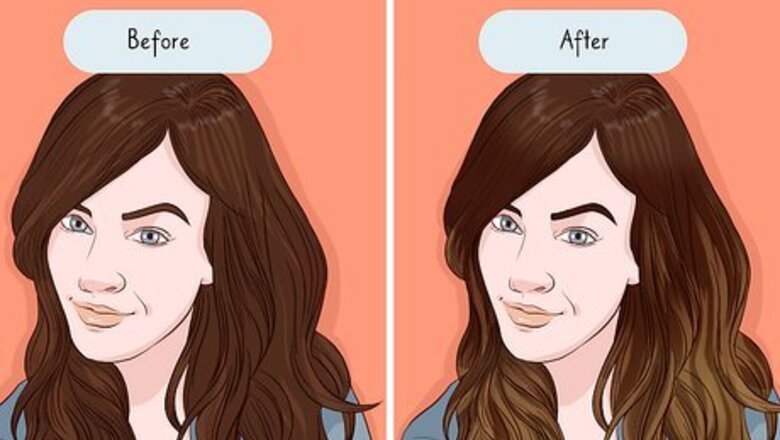
views
Choosing a Color
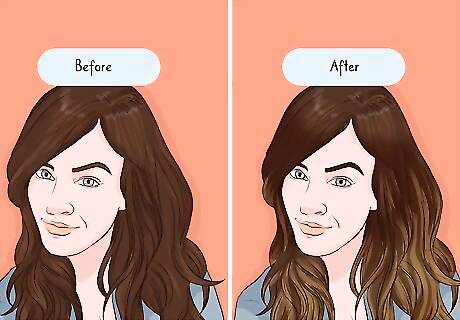
Choose a light blonde color if you have dark, cool brown hair. If your hair is a naturally cool, dark shade, like chocolate or dark ash brown, choose a light blonde color for your balayage highlights. A shade of lighter ash or khaki will give you sleek, flattering highlights. If you have very dark hair, you may need to bleach it before attempting to dye it blonde. Otherwise, your hair may not appear as light as you want. The final color will depend on your natural hair color and the developer you use. Looking at your skin tone will help you figure out if your hair is warm or cool. An easy way to figure out your skin tone is to check if you look best with silver or gold jewelry. You'll likely look best with gold jewelry if your skin tone is warm or silver jewelry if your skin tone is cool.

Go with a caramel shade if you have natural or warm brown hair. If you have warmer-toned or natural hair in shades like walnut or mahogany, go for blonde highlights with more yellow in them. Look for a caramel or honey blonde shade for a warm, natural look. If you have natural hair, gold tones look especially great. Try balayage highlights in red, gold, or copper.

Try a flaxen or beige balayage if you have cool blonde hair. If you want to try the balayage technique with light, icy-toned blonde hair, go with a shade with no warm tones, like cool beige or flaxen. These more metallic shades can enhance the gray-green tint of your hair. Balayage highlights will only pop on blonde hair that’s more dirty blonde, as opposed to platinum. If you have white blonde hair, try lowlights instead.
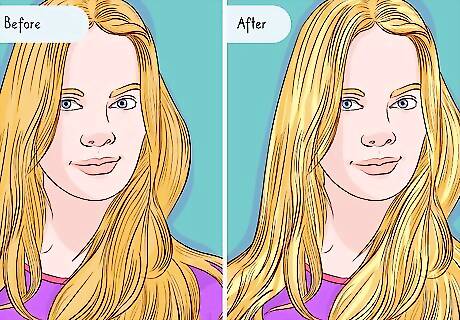
Use light gold dye if you have yellower blonde hair. With blonde hair that’s sunnier and warmer in color, like honey or sandy shades, look for a dye that’s light gold, beachy, or burnished yellow. Subtle highlights in these shades will add depth and movement to your naturally blonde locks.
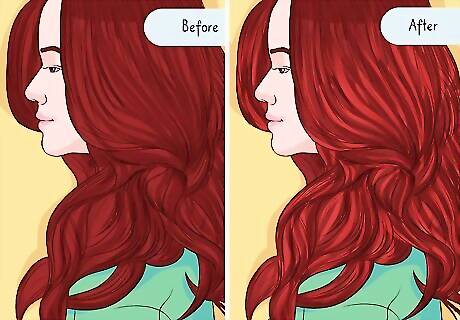
Pair red hair with balayage in the same color family. Balayage can be a great technique to bring out different notes in red hair, too. Stay within the same general hue as your natural color for a subtle, sun-kissed look. If you have a blue-red hair tone, like scarlet or wine, go with cooler balayage colors like strawberry. For an orange-red hair color, try copper or ginger highlights.
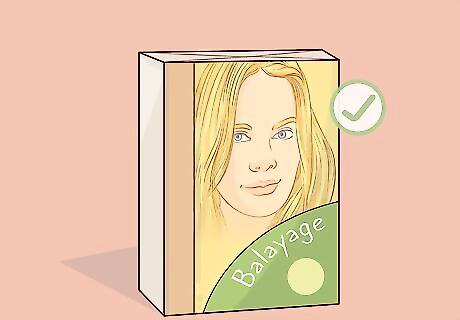
Buy a balayage or highlighting kit at a beauty store. It’s best to balayage hair with highlighting or balayage kits, which are available at any store that sells hair products and online. Good kits should be easy to find and affordable. Balayage kits come with a comb applicator, lightening formula, plastic gloves, conditioner to use afterwards, and instructions. They're a convenient way to try this hair coloring technique at home. If you can't find a balayage kit, you might try a kit made for traditional highlights. If you have very dark hair, you might also need a bleaching kit if you're hope for a dramatic change. Balayage will work on any hair type.
Applying the Hair Dye
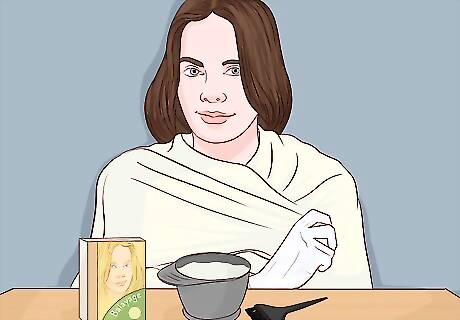
Prep the hair dye and put a towel around your shoulders for spills. Follow the instructions on your highlighting kit to get your dye ready to go. Put an old towel around your shoulders to soak up excess dye and wear an old shirt in case of spills. You should also slip on disposable plastic gloves to prevent stains on your hands. You’ll want to start with dry, clean hair for the best dye application. Unlike other hair coloring techniques, you might not have to apply bleach before you balayage hair. The dye formula included in your kit comes with all the ingredients you’ll need to lighten your hair without a separate bleaching step, in some cases. If you want a dramatic color change from dark hair to light, then you may still need to bleach your hair.
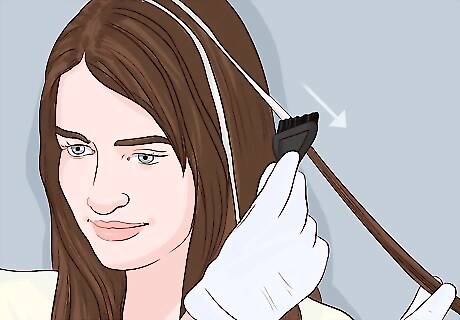
Test one strip of hair before you start applying the hair dye. Choose a small piece from the bottom layer of your hair and apply just a dab of dye to it. Let it process for the instructed amount of time, then rinse out the dye and check the color. This allows you to check the dye color and make sure that your hair doesn’t have any negative reactions to it.
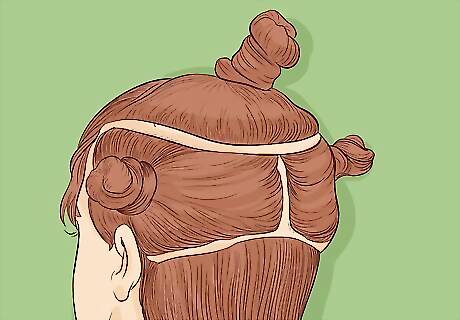
Separate your hair into 3 sections. Draw the tail end of a comb from ear-to-ear in a halo-like line to separate your hair into top, middle, and bottom sections. Slip hair ties around the top and middle sections and move them to the sides, or pull them into small buns so you can work on the bottom section first.
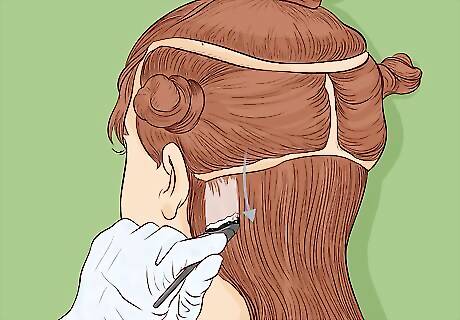
Separate a thin, wispy strip of hair in the bottom section. Starting on one side of your hair, separate out one thin piece of hair. The exact width of your highlights depends on your preference, but balayage tends to look best with thinner, more subtle highlights, no more than 1 inch (2.5 cm) wide.
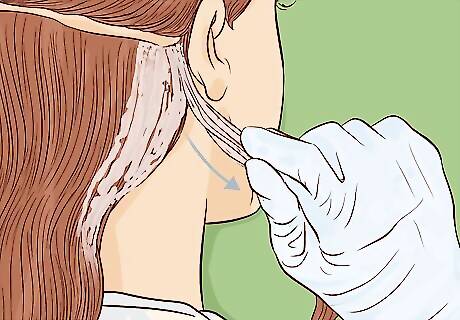
Apply the dye with your fingers or the brush from the dye kit. Hold the strand with hand and dip your fingers or dye brush into the hair dye. Then, gently paint the dye onto the strip of hair with your other hand, applying it more heavily at the bottom and tapering off as you reach the mid-lengths. If you want a natural look, painting the dye onto your hair is the best way to achieve it. However, you should not make horizontal or broad strokes. Try to blend it as well as you can. Unlike with traditional highlights, you'll only apply the dye to part of the strand, so don't go all the way to your roots. Most balayage styles tend to fade out about midway up the strand, especially on long hair. This tapering method will give your hair the natural, fading effect that the balayage technique is known for. Be extra careful if you have short hair so you don't accidentally cover more of your hair than you'd like.

Continue applying the dye, alternating from side to side. Pick a strand on the other side of your head and repeat the application process, going back and forth and from front to back. For the most natural, sun-kissed look, only highlight strands that are about 1 inch (2.5 cm) apart, or as far apart as you want your highlights. Once you complete the bottom layer, you can gently section it off with a hair tie, though this is optional. You can also cover your hair with a piece of foil before proceeding. Then, repeat the process with the middle and top sections of your hair. The hair in the bottom layer tends to be darker and more difficult to lighten, so it’s best to add highlights there first and give them the longest time to process.

Let the color process, then rinse it out with the included shampoo. Once you’ve added your highlights, check your dye box to see how long you should wait to let the color process—it’s typically around 20-30 minutes. Then, rinse out the dye with the shampoo included in the package and follow it with a thick layer of the toning mask, if one is included. Leave the toning mask in as long as instructed, then rinse it out in the shower. Remember that the longer you let the dye process, the lighter your highlights will be.
Maintaining Your Balayage Look
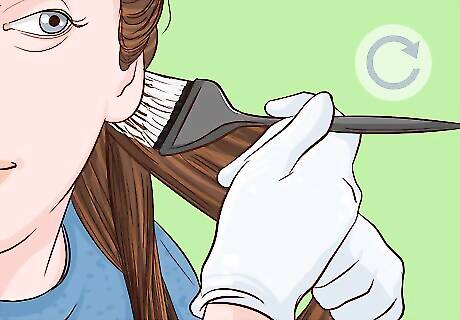
Repeat your balayage process when your hair needs more color. Part of the reason that the balayage technique is so popular is that the process doesn’t require touch-up trips to the salon; it will grow out very naturally. Keep an eye on the color and simply repeat the process whenever you think your color needs a pick-me-up, every 2-3 months. You can even let your balayage highlights go longer and transition it to an ombre look.
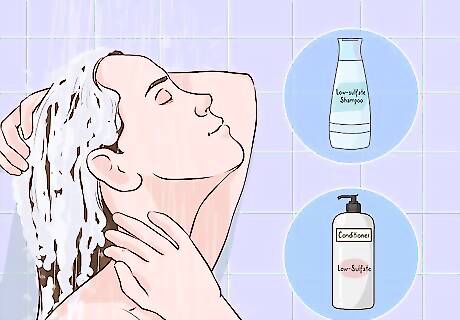
Wash with a color-correcting, low-sulfate shampoo and conditioner. To keep your highlights looking fresh, opt for a color-correcting shampoo and conditioner combo that won’t fade your dye prematurely. Using products made for dyed hair will also keep your highlights from getting dark or brassy. If you have have naturally blonde hair, keep your highlights from turning brassy or yellow by using a purple shampoo or spray once or twice a week. However, don't use it too often, as it can give your hair a purple tint. Avoid washing your hair every day, as that can dry it out. Try washing your hair every 2-3 days instead, and use dry shampoo to touch up your roots between washes.
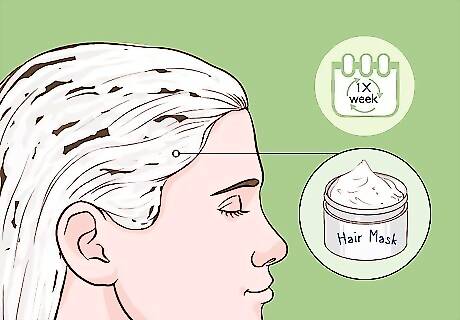
Apply a hair mask once a week to hydrate your strands. Even the small amount of hair dye used in balayage can dry out your strands, leaving them stiff and hard to style. To keep your hair healthy, apply a hydrating hair mask once a week. You can buy a hair mask at a beauty store or online, or make your own. If you bleached your hair, apply a restorative treatment to your hair once or twice a week. You can also use a protein treatment once a month to strengthen your hair, but avoid using it more than that, or it will make your hair brittle.
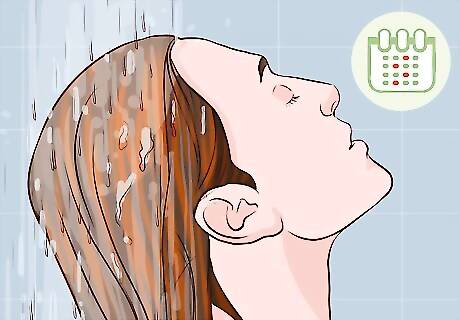
Shower every other day with lukewarm water. To make keep your hair healthy and moisturized, rinse and wash it with cool or lukewarm water instead of hot water, which can strip moisture. It’s also best to shower every other day or once every few days; washing your hair too often can make it dry and brittle.














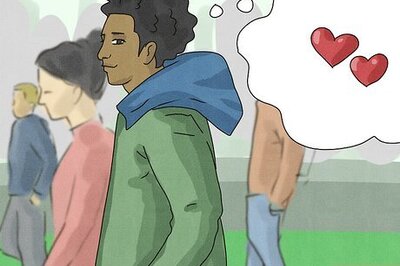




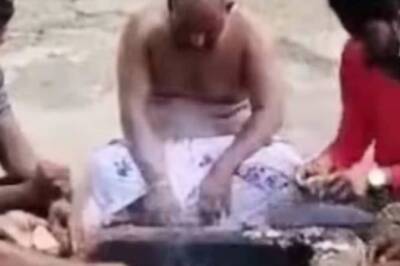
Comments
0 comment